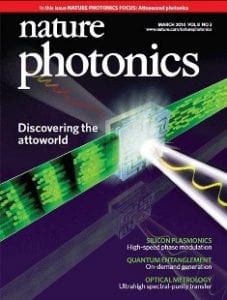New Research on the Attosecond from Three UCF Professors
 In 2012, University of Central Florida’s Dr. Zenghu Chang, created the world’s shortest laser pulse at 67 attoseconds in the Florida Atto Science & Technology (FAST) Lab. Scientists rejoiced because Dr. Chang might have created a tool able to view quantum mechanics, a branch of physics that deals with the structure and behavior of very small pieces of matter, in action. By “small pieces of matter” we mean pieces that are so tiny, they can’t be described in regular measurements and are considered entirely in terms of statistical probability.
In 2012, University of Central Florida’s Dr. Zenghu Chang, created the world’s shortest laser pulse at 67 attoseconds in the Florida Atto Science & Technology (FAST) Lab. Scientists rejoiced because Dr. Chang might have created a tool able to view quantum mechanics, a branch of physics that deals with the structure and behavior of very small pieces of matter, in action. By “small pieces of matter” we mean pieces that are so tiny, they can’t be described in regular measurements and are considered entirely in terms of statistical probability.
Also, to give an idea of how short an attosecond is, Dr. Chang would have to replicate his short laser pulse experiment 15 million billion times to equal one regular second. That’s insane.
Nature Photonic’s March 2014 issue features a review on the attosecond’s recent developments and the possible future applications of the technology, authored by three UCF physics Professors: Dr. Michael Chini, Dr. Kun Zhao, and Dr. Zenghu Chang. For a look an abstract of the review, or the entire piece, click here. (Their article is first under the Reviews section when you scroll down.)
The College of Sciences thanks and applauds Drs. Chang, Chini and Zhao for their continued research in attoseconds. We can’t wait to see where your research will lead in the future.
For more information on Dr. Chang’s 2012 experiment with attoseconds, click here.
